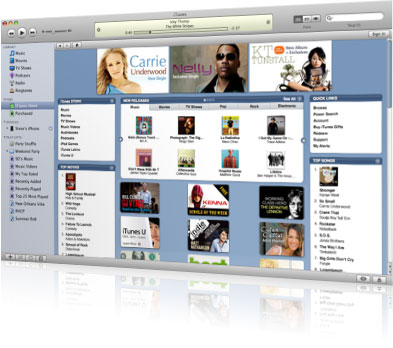This HEXUS.help guide discusses digital distribution, what it is, how it affects both manufacturers and consumers, and what the future holds for digital media delivery.
The technology and how it works
Digital distribution isn’t a product in itself - it is the name given to the delivery of products and services via the Internet. This HEXUS.help guide will focus on how digital distribution could affect the future of your books, music and movies.
Though digital distribution may not be a familiar term to most, those who claim not to know of it, may indeed already be using it. Digital distribution has been growing steadily at an increasingly rapid pace and exists today in many widely-used formats such as Apple’s iTunes - used to digitally distribute music.
So, why should we take notice of the digital distribution of media? Well, it could pave the way for cheaper goods for the consumer.
Removing the need for physical manufacturing, digitally distributed media can be marketed at much lower costs, resulting in increased profits for artists or reduced prices for consumers.
Another key factor for distributors is that of availability. Via the Internet, digital distribution provides easy access to a global market of millions of potential customers.
In recent years, the music industry has continued to cite the delivery of music via the Internet as a crucial factor in the declining sales of music CDs.
Music, however, isn’t the only media to be distributed digitally. With the growth of the Internet and increased broadband speeds, movies, books and television programmes are now all available through various digital means.
The Market
The market for digital distribution is growing at a remarkable pace. One of the most well-known providers of digital content, Apple, announced recently that its iTunes store had become the number two music retailer in the US. iTunes, Apple’s digital delivery platform for music, music videos and movies, has now served over 50 million customers and has sold over four billion songs.

With those figures, it’s clear to see that the digital media market is colossal. So, what are the reasons for a consumer switch from physical media to digital media? The most obvious is that digital media is easily accessible. In terms of music, purchasing a song at an online store is quicker, cheaper and more convenient than visiting a store to purchase the same CD.
Likewise, consumers may find that digital media is easier to collect. With hard disk drives growing in capacity and falling in price, consumers can now store thousands of songs in their music library – all of which would be accessible via the click of a button.
A practically infinite supply of media, available to practically every user connected to the Internet - the market for digital distribution is as big as it gets.
The Players
So, who stands to capitalise by becoming a front-runner in the delivery of digital media? Let’s break it down by media type.
Music
On the audio front, Apple’s iTunes is the name most familiar to most. Already well-established, iTunes serves millions of customers seeking digital music. iTunes, however, isn’t without its disadvantages. Consumers who purchase music via iTunes are then forced, via DRM (Digital Rights Management), to playback the media only on Apple’s own devices.
Wanting to take advantage of Apple’s restrictions, other big name distributors of digital music include Amazon, whose MP3 store is DRM-free and allows consumers to purchase media for playback on any device.
Movies
With the continued success of digital delivery for music, it comes as no surprise that movies are now the next in line for large-scale digital distribution. Apple, once again, looks to make a significant impact on the market as it now allows for entire movies to be downloaded in standard- or high-definition via its iTunes service. With Apple TV, users can then view the movies on their TV screens or monitors.

Another front-runner in movie distribution is Microsoft. With its Xbox 360 console and Xbox Live Marketplace, movies are available to download in standard- or high-definition directly to Xbox 360 consoles.
Though Blu-ray, Sony’s next-generation optical format and successor to DVD, is now readily available, take-up has been slow and many argue that the high-definition disc could prove to be redundant if digital distribution continues to grow at its current pace.
Books
Last but not least, books. Though the digital distribution of books has yet to see significant adoption, it isn’t through lack of trying. In the US, retailer Amazon has developed a device, called Kindle, solely for the purpose of reading books in a digital format.
Via its Kindle store, Amazon customers can purchase books from a selection of thousands and have them delivered near-instantly to their Kindle device.
Summary
It’s clear to see that digital distribution is here to stay and could, before long, prove to be the leading choice for consumer purchases of music and video media.
With some of the biggest names in the industry, such as Apple and Microsoft, focussing their efforts heavily on a digitally-distributed future, don’t be at all surprised to find your media collection turning digital.
Users of CDs and DVDs alike, your next purchase could well be without physical media - it could be entirely digital.













